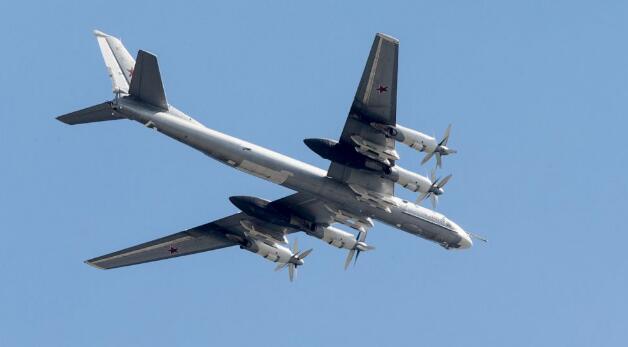Why would Russia use hypersonic missile to strike Ukraine?
The latest Russian missile barrage against Ukraine’s civilian infrastructure has marked one of the largest such attacks in months.
On Thursday, Russia fired over 80 missiles in a massive effort to overwhelm Ukrainian air defenses and cripple the country’s energy system.
Russia has been regularly launching similar strikes since October in a bid to demoralize the population and force the Ukrainian government to bow to the Kremlin’s demands.
Thursday’s strikes differed from earlier attacks, though, by including a larger number of sophisticated hypersonic missiles that are the most advanced weapons in the Russian arsenal. But just like previous such barrages it has failed to cause lasting damage to the country’s energy network, with repair crews quickly restoring power supplies to most regions.
Here is a look at the latest Russian missile attack and the weapons involved.
WHAT DID UKRAINIAN AND RUSSIAN OFFICIALS SAY?
Ukraine’s military chief, Gen. Valerii Zaluzhnyi, said that Russia launched 81 missiles and eight exploding Iranian-made Shahed drones in a barrage early Thursday, and Ukraine’s air defenses downed 34 missiles and four drones.
According to Zaluzhnyi, those missiles included six hypersonic Kinzhal missiles, the most advanced weapons in the Russian arsenal. Ukrainian air force spokesman Yurii Ihnat emphasized that Ukraine lacks assets to intercept the Kinzhal and the older Kh-22 missiles that were also used in Thursday’s strikes.
Russia’s Defense Ministry described the barrage as a “strike of retribution” in retaliation for what Moscow described as a cross-border raid by Ukrainian saboteurs who attacked two villages in the Bryansk region in western Russia last week. A group of self-exiled Russians fighting alongside Ukrainian forces claimed responsibility for the attack, while Ukraine denied involvement. Moscow didn’t say how many missiles were fired, but claimed they hit the designated targets.
HOW DID THE LATEST BARRAGE DIFFER FROM EARLIER RUSSIAN ATTACKS?
Military analysts noted that the number of Kinzhal missiles used in Thursday’s barrage was significantly higher compared to previous strikes, which have typically involved no more than a couple of such weapons.
The Kinzhal is one of the latest and most advanced Russian weapons. The Russian military says the air-launched ballistic missile has a range of up to 2,000 kilometers (about 1,250 miles) and flies at 10 times the speed of sound, making it hard to intercept. A combination of hypersonic speed and a heavy warhead allows the Kinzhal to destroy heavily fortified targets, like underground bunkers or mountain tunnels.
Russia has used the Kinzhal to strike targets in Ukraine starting from the early days of the invasion, but it has used the expensive weapon sparingly and against priority targets, apparently reflecting the small number of Kinzhals available.
The precise targets for Russian strikes and the resulting damage remain unclear as Ukrainian authorities have maintained a tight lid of secrecy on such information to avoid giving Russia a clue for planning future attacks. It’s also unclear what missiles Russia has used to hit which targeted facilities, although Western officials and military analysts have argued that Russia has faced an increasing shortage of state-of-the-art weapons, with new production far too slow to compensate for the amount already spent.
The British Defense Ministry noted Friday that the intervals between Russian missile strikes have grown bigger, probably “because Russia now needs to stockpile a critical mass of newly produced missiles directly from industry before it can resource a strike big enough to credibly overwhelm Ukrainian air defenses.”
The Kinzhal is carried by MiG-31 fighter jets, some of which are based in Belarus. Russia has used the territory of its ally as a staging ground for the invasion and maintained its troops and weapons there.
WHAT OTHER WEAPONS DID RUSSIA USE?
The Ukrainian military said that Thursday’s barrage also included six older Kh-22 missiles, which are launched by Tu-22M heavy bombers and fly at more than three times the speed of sound.
The massive weapon, which has a range of 600 kilometers (370 miles) and dates back to the 1970s, was designed by the Soviet Union to strike U.S. aircraft carriers and other warships. It packs a big punch thanks to its supersonic speed and a heavy load of 630 kilograms (nearly 1,400 pounds) of explosives, but its outdated guidance system could make it highly inaccurate against ground targets, raising the probability of collateral damage.
Like in previous strikes, Russia also fired the modern Kh-101 cruise missiles carried by strategic bombers and the Kalibr cruise missiles that are launched by warships. The long-range, high-precision missiles are subsonic and the Ukrainian military has said it has successfully engaged them.
Another fixture in the Russian strikes were S-300 air defense missiles that Russia uses against ground targets at a comparatively smaller distance from the front line. While its relatively small warhead lacks the punch of bigger weapons designed to hit ground targets, Russia appears to have a big stock of such missiles and Ukraine can’t intercept them.
Russia has also used some shorter-range air-launched missiles carried by fighter jets and the Iranian exploding drones. Ukrainian officials have said that the military has become increasingly successful in tackling them, downing the bulk of drones launched in each strike.
Ukrainian officials and experts say that by using numerous types of of missiles as well as drones in one massive attack Russia tries to overwhelm Ukrainian air defenses.
“It’s much more difficult for the Ukrainian air defenses to deal with an attack when they launch a motley collection of ballistic and ordinary missiles along with drones,” Zhdanov said. “Russia has been searching for weak spots in Ukrainian air defenses and it has partially succeeded.”
